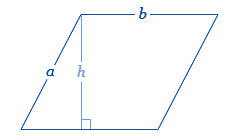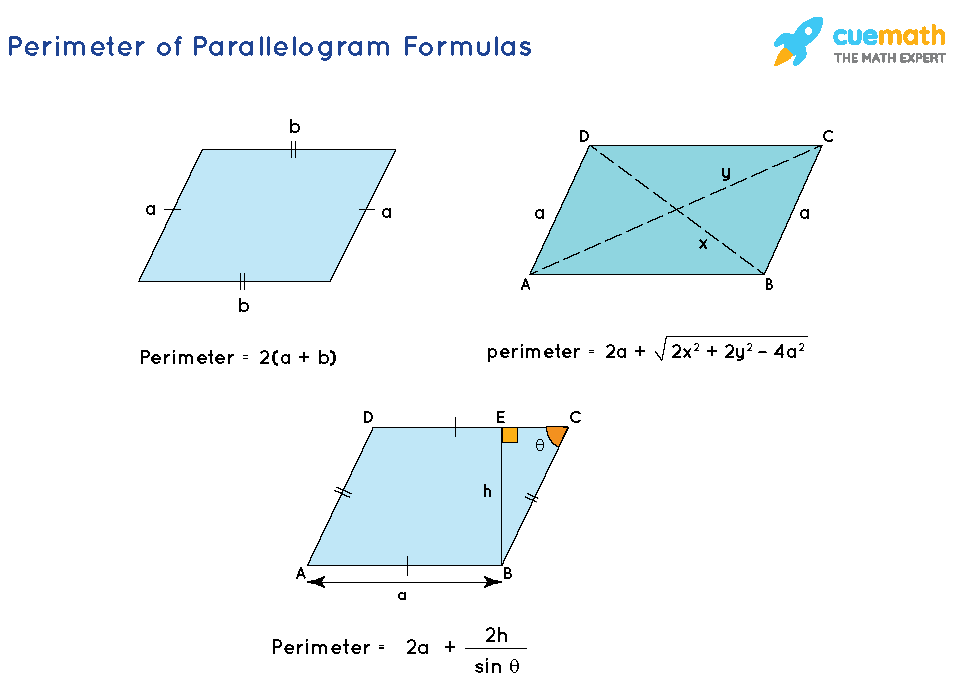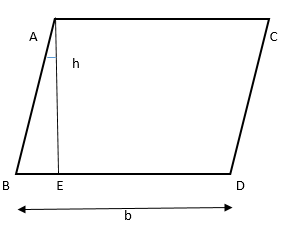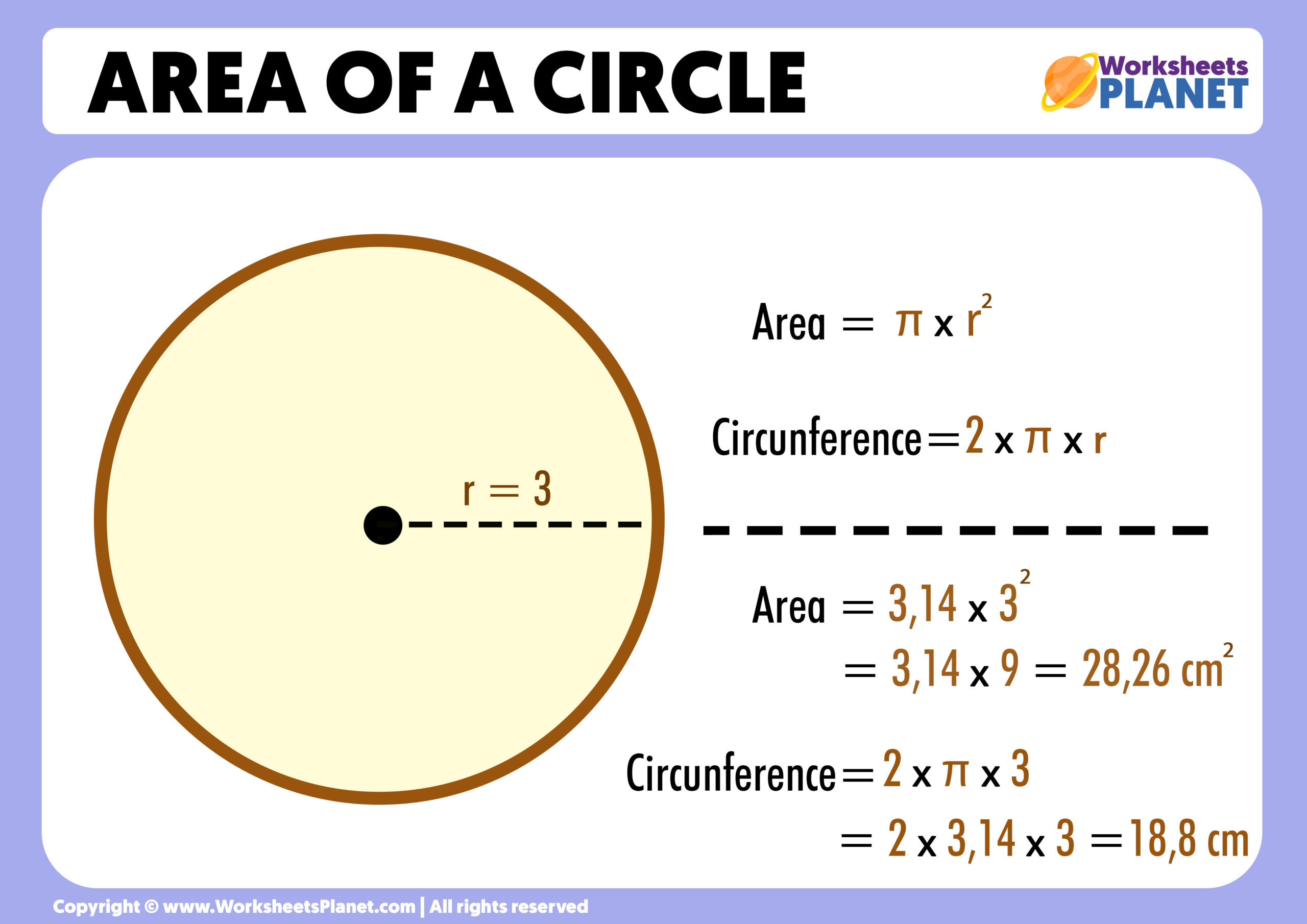Topic what is a perimeter of a parallelogram: Discover the world of geometry as we explore "What is a Perimeter of a Parallelogram," unraveling the mysteries behind this fundamental geometric concept in an easy-to-understand way.
Table of Content
- Basic Definition and Properties of a Parallelogram
- YOUTUBE: Finding the Perimeter of a Parallelogram
- Perimeter of a Parallelogram: The Formula
- Detailed Examples of Perimeter Calculations
- Understanding Perimeter Through Geometric Principles
- Advanced Concepts: Perimeter with Diagonals and Angles
- Practical Applications and Real-World Examples
- Frequently Asked Questions About Parallelograms
Basic Definition and Properties of a Parallelogram
A parallelogram is a unique four-sided figure in geometry, characterized by its parallel and equal opposite sides. This shape offers fascinating insights into geometric properties and principles.
- Opposite Sides are Parallel and Equal: In a parallelogram, each pair of opposite sides is not only parallel to each other but also equal in length.
- Opposite Angles are Equal: Another intriguing aspect of a parallelogram is that the angles opposite to each other are of equal measure.
- Consecutive Angles are Supplementary: Each pair of consecutive angles (angles next to each other) in a parallelogram adds up to 180 degrees, making them supplementary.
- Diagonals Bisect Each Other: The diagonals of a parallelogram intersect each other at their midpoints, effectively bisecting one another.
- Sum of Interior Angles: Like any quadrilateral, the sum of the interior angles in a parallelogram is always 360 degrees.
These properties not only define a parallelogram but also play a crucial role in understanding its perimeter – the total length of the figure\"s boundaries.

READ MORE:
Finding the Perimeter of a Parallelogram
\"Discover the secrets of measuring perimeters in our fascinating video! From simple shapes to complex figures, we\'ll guide you through step-by-step to help you master this essential skill. Don\'t miss out on expanding your knowledge!\"
Perimeter of a Parallelogram: The Formula
Understanding the formula for calculating the perimeter of a parallelogram is key to mastering basic geometry. The perimeter is the total distance around the outside of the parallelogram.
- Standard Formula: The most common formula for finding the perimeter of a parallelogram is P = 2(a + b), where \"a\" and \"b\" are the lengths of the adjacent sides.
- Using Diagonals and Angles: In more complex scenarios, the perimeter can also be calculated using the lengths of diagonals, sides, and angles. For example, P = 2a + √(2x² + 2y² - 4a²), where \"x\" and \"y\" are the diagonals.
- Alternative Formula with Height and Angle: Another variation of the formula is P = 2a + 2h / sinθ, combining side length \"a\", height \"h\", and angle θ.
These formulas are vital tools for solving problems related to parallelograms in various mathematical and practical applications.

Finding the Area and Perimeter of a Parallelogram
\"Unlock the mysteries of calculating areas in our captivating video! Join us as we delve into the world of shapes and explore various methods to determine their areas. Get ready to transform your math skills with this engaging and enlightening content!\"
Area of a Parallelogram: Perimeter, Area, and Volume (Geometry Tutorial)
\"Dive into the realm of volume calculations with our mesmerizing video! Whether you\'re dealing with solids or liquids, we\'ve got you covered. Join us as we uncover the tricks and techniques to easily compute volumes. Get ready to be amazed!\"
Detailed Examples of Perimeter Calculations
Let\"s dive into some practical examples to better understand how to calculate the perimeter of a parallelogram using the formulas we discussed.
- Example 1: Simple Calculation
- Imagine a parallelogram with sides 6 cm and 9 cm. Using the standard formula P = 2(a + b), we get P = 2(6 + 9) = 2 × 15 = 30 cm.
- Example 2: Using Diagonals
- Consider a parallelogram with one side 8 inches, diagonals 10 inches, and 12 inches. Applying P = 2a + √(2x² + 2y² - 4a²), the perimeter is approximately 31.23 inches.
- Example 3: With Height and Angle
- For a parallelogram with a side 15 yards, height 20 yards, and an angle of 30 degrees, the perimeter, calculated using P = 2a + 2h / sinθ, is 110 yards.
These examples provide a clear understanding of how the perimeter of a parallelogram varies depending on the given dimensions and properties.

Understanding Perimeter Through Geometric Principles
To fully grasp the concept of a parallelogram\"s perimeter, it\"s essential to connect it with fundamental geometric principles.
- Parallelism and Equality: The defining characteristic of parallelograms - parallel and equal opposite sides - is central to understanding their perimeter. This unique property ensures that calculating the perimeter involves simply doubling the sum of two adjacent sides.
- Geometric Congruence: Parallelograms share some properties with other quadrilaterals like rectangles and squares. This congruence in properties allows for similar approaches in perimeter calculations, underscoring the interconnectedness of geometric shapes.
- Supplementary Angles: The principle that adjacent angles in a parallelogram add up to 180 degrees is a reminder of the shape\"s internal consistency and helps in understanding complex perimeter calculations involving angles.
- Role of Diagonals: In parallelograms, diagonals bisect each other and play a crucial role in determining the shape\"s characteristics, which can be used in advanced perimeter calculations.
Through these principles, the calculation of a parallelogram\"s perimeter becomes more than just a formula; it becomes a window into the harmony and logic of geometry.

Advanced Concepts: Perimeter with Diagonals and Angles
When it comes to calculating the perimeter of a parallelogram using diagonals and angles, the approach becomes more advanced and intricate.
- Using Diagonals: In scenarios where the sides and diagonals of a parallelogram are known, we can apply a more complex formula: P = 2a + √(2x² + 2y² - 4a²), where \"x\" and \"y\" are the lengths of the diagonals. This formula takes into account the properties of diagonals bisecting each other.
- Incorporating Angles: Another advanced method involves using the angle between the sides of the parallelogram. For example, if we know one side length \"a\", the height \"h\", and an angle θ, the perimeter can be calculated using the formula P = 2a + 2h / sinθ. This approach integrates trigonometric concepts into geometric calculations.
- Understanding the Role of Angles: The angles in a parallelogram, especially when used with the side lengths and height, provide a comprehensive understanding of the shape’s geometry, which is crucial for accurate perimeter calculation in complex scenarios.
These advanced methods underscore the deep connection between geometry and trigonometry in understanding and calculating the properties of geometric shapes like parallelograms.

_HOOK_
Practical Applications and Real-World Examples
The concept of the perimeter of a parallelogram extends beyond the classroom, finding numerous applications in real-world scenarios.
- Architecture and Design: In architecture, understanding the perimeter of parallelograms is essential for designing floors, walls, and ceilings in modern structures, where unconventional shapes are common.
- Land Surveying: Land surveyors often deal with plots of land shaped like parallelograms. Calculating the perimeter helps in determining the total boundary length for fencing or development purposes.
- Art and Decoration: Artists and interior designers use the concept of parallelograms to create visually appealing patterns and layouts, where knowing the perimeter can aid in material estimation and spatial planning.
- Geographical Mapping: Cartography often involves dealing with parallelogram-shaped areas, especially in grid-based mapping systems, making perimeter calculations crucial for accurate mapping.
- Educational Tools: In educational contexts, parallelogram perimeters serve as excellent examples to teach geometric principles and enhance problem-solving skills.
These real-world applications demonstrate how the mathematical concept of a parallelogram’s perimeter is integral to various practical and professional fields.

READ MORE:
Frequently Asked Questions About Parallelograms
- What defines a parallelogram?
- A parallelogram is a four-sided shape with opposite sides that are both parallel and equal in length. It is a type of quadrilateral in geometry.
- How do you calculate the perimeter of a parallelogram?
- The perimeter of a parallelogram is calculated by adding the lengths of all its sides. The standard formula is P = 2(a + b), where \"a\" and \"b\" are the lengths of adjacent sides.
- Are the diagonals of a parallelogram equal?
- No, the diagonals of a parallelogram are generally not equal. However, they bisect each other at the midpoint.
- Can a parallelogram have right angles?
- Yes, a parallelogram can have right angles. When all angles are right angles, it is also known as a rectangle.
- Is every rectangle a parallelogram?
- Yes, every rectangle is a parallelogram since it has opposite sides that are parallel and equal. However, not every parallelogram is a rectangle.
- How does the area of a parallelogram differ from its perimeter?
- The area of a parallelogram is the space enclosed within it, calculated as base times height. The perimeter, on the other hand, is the total distance around the outside of the parallelogram.
Exploring the perimeter of a parallelogram reveals a fascinating intersection of geometry and practicality. This journey through geometric principles and real-world applications enriches our understanding and appreciation of this fundamental shape.










